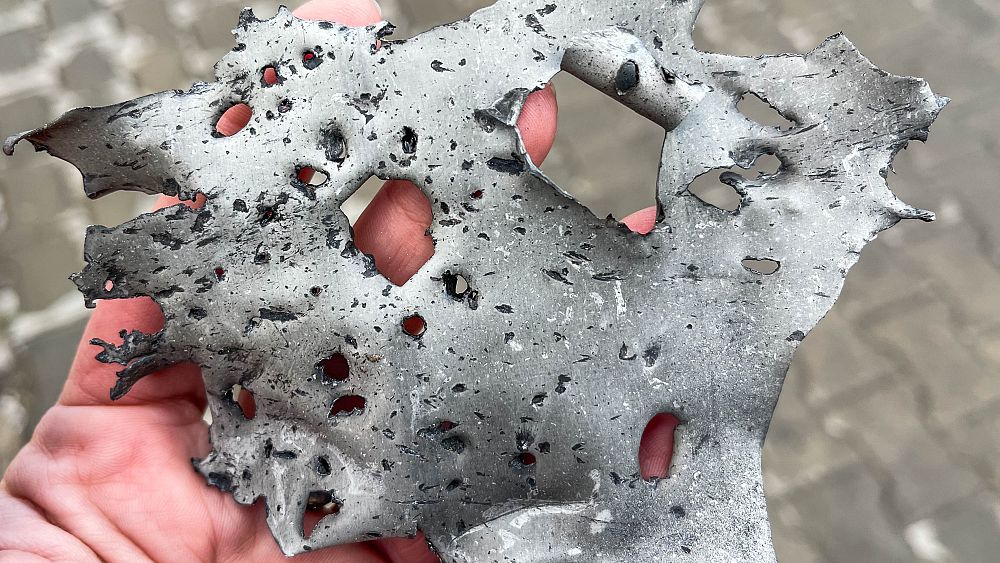“The Russian army has attacked Kherson three times tonight. The islands and the shore communities were shelled…” – local media reports, citing the regional authorities. Reports like this come regularly from the southern Ukrainian city that used to be in the headlines during the initial stages of Russia’s full-scale invasion of Ukraine last year.
This city of 300,000 residents before the war, was taken over by Russian troops in the first weeks of the offensive and then won back in Ukraine’s army counteroffensive, nine months later. The powerful photographs of Kherson residents’ resistance against the occupation and then the emotional welcome of Ukrainian soldiers by the locals hit the headlines of the world’s press. But then the situation in the city largely disappeared from the world’s radar.
However, the city and its outskirts are far from peaceful. The residents live under constant threat of shelling and deaths of civilians are often reported. The situation escalated in the end of last year.
“So here is my house. In that direction, the neighbouring house was hit by a mine. On that side, another house was hit by a mine, and on the third side as well the house got hit. Only on this front side, nothing got damaged yet,” says Roman, who lives in one of the districts that were hit most recently on the last day of March.
The Russian forces still occupy the left bank of the Kherson region. In their position just across the river Dnipro, they attack the territories under Ukrainian control with artillery and mortar fire, causing deaths and destruction.
“It’s really scary, especially at night, we beg for God’s mercy, the sound is so loud we jump off our beds,” – says Dina Andriyivna, 75, who is trying to sell some dried fish and vegetables from a make-shift stall near the market. It is located in the city’s district which is considered to be one of the most dangerous, given its proximity to the river, therefore to the Russian positions.
“Now we have running water at home,” she continues. “Earlier we didn’t have even that. But the heating system still doesn’t work(..).I think this will be over eventually…”
“And things will be like before?” we ask.
“Yes, like before,” – she smiles lightly – “and what do you think, will this be over?”
The sound of an explosion interrupts the conversation for a second.
“Oh well, you see… that one wasn’t too bad… The “Hailstorms” worked really intensively there this morning”.
(‘The hailstorms’, called ‘Grads’ in Russian – are a self-propelled 122 mm multiple rocket launchers.)
“This night was ok, but the previous night….oh… the windows all went down,” says another elderly, who was visiting the market.
“No, we don’t hide. How can we? Imagine, you are sleeping at night and suddenly you feel a powerful explosion…BOOM. Of course, if were warned: “Here the powerful explosion is coming, it’s going to break your window glass and your building will shake”. Then, yes, maybe, we would at least hide near the wall somewhere…but instead, we are lying in our beds and seeing this red glow (that comes with explosions)”.
There is no illusion of safety in any other district of the city. Reports come from bus stops, shops, a theatre, and a central park all being hit. Around three hours after one such incident – the bodies of the victims of the attack are already taken away from the street, the buses keep running, and passengers wait 10 metres away from the epicentre of the tragedy.
“We don’t know for how much longer we can live like this,” some residents say.
Some Kherson residents returned home after the Russian troops withdrew, but others chose to leave as the shelling intensified.
The family of Serhiy Kabanov, 21, his parents and sisters, aged five and six, have gone to Mykolaiv after they witnessed a series of deadly explosions. Serhiy doesn’t plan to return to his home town in the near future. Talking about his life there, he shows the before and after photos of his favourite place close to home which was destroyed.
“Every time missiles are shot like this you think will the next one be for you, or the next one? It’s like walking on the edge. One time when I was standing in line at the post office, the building was hit nearby, and another time the explosion at the market was very, very close. Then I even felt the explosion wave and the warmth of it on me. It got, of course. quite scary.”





















Discussion about this post